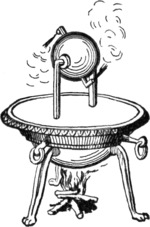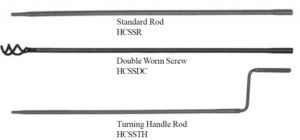In a world of “Bean counters”, the bottom line and increased production, we seem to have missed the human side of the equation and it is having a detrimental effect upon all of us personally.
Terms like work-life balance, transparency and a hundred other touchy feely buzz words seem to only appease the many; with a sense that “something is being done or there is a process to follow”. The problem lies in the truth that as a business the chosen target of focus is the wrong one. We focus to attain and maintain 10% growth, we focus upon man hours wasted, increasing production and reducing staff, all valid strategies yet only one side of the complex equation that is work and business. The other side of the coin is far more complex and counter intuitive.
The ancient Romans were presented with a steam engine by Heron, a Greek mathematician and engineer in the 1st century, yes a basic, rudimentary steam engine (the aeolipile ) it could have been used to do work and may have eventually lead to the industrial revolution occurring back in ancient Rome. The surprising thing is, when this device was shown to the Romans they basically replied “What would we do with all the slaves?” How many among us would have thought to say that, does this mean they were smarter than us or is it that they had a different focus and vision of what work was actually about. Yes they had slaves but they also were aware that if a machine could do all the work then the social impact would be far greater than they were prepared to suffer.
 Mechanisation and the industrial revolution did occur and its social impact has been felt ever since but does that mean in a modern work place the workers are machines, cogs in the greater mechanism? Is production the means and the end of the modern global workforce? Strangely enough I have never heard anyone say they work solely to produce; reproduce maybe, family, friends or the next holiday, but never just to produce product or perform a service as the ultimate goal of their labours. The goal for most people is not what they actually produce but what they think it will give them, a means to an end. So to most of us work is not the destination but the method or journey to achieve something greater.
Mechanisation and the industrial revolution did occur and its social impact has been felt ever since but does that mean in a modern work place the workers are machines, cogs in the greater mechanism? Is production the means and the end of the modern global workforce? Strangely enough I have never heard anyone say they work solely to produce; reproduce maybe, family, friends or the next holiday, but never just to produce product or perform a service as the ultimate goal of their labours. The goal for most people is not what they actually produce but what they think it will give them, a means to an end. So to most of us work is not the destination but the method or journey to achieve something greater.
With that in mind, think about the way we examine a business and work-flow. The focus is on efficiency, increased profit and reduced cost, all easily measured metrics and relatively easy to modify, especially in a negative way. Now look at the goal of the “workers” the human side of the equation (yes, this includes Management), a much harder metric to examine let alone measure. This is a can of worms! And far to complex to broach here. Yet we can determine some threads to be taken home from this:
Obviously the goal of the “workers” is not actually tightly related to the method or journey taken.
The way we measure success is narrow by nature, focusing upon components not the whole.
So what am I getting at ? The question we often ask is wrong, not because we don’t know it’s wrong but because that’s how we’ve always worked. More is better but more of the wrong thing is worse.
Focus and goals are highly relevant and to lose sight of them is a dangerous and unhealthy way to go. Consider a holiday, a trip across Europe say, most of us plan this sort of thing, where to go, what to see, what to do, and so on. Now what is the goal of a holiday, this varies but for most of us it’s to relax and take a break from work etc. So if your goal is to relax and take it easy then would you plan every moment of the trip; bus and train timetables optimised, condense the trip to its minimum? No, of course not, but if your goal was to see as much of Europe in the time you had, the answer would be Yes. That’s a sight-seeing trip not a holiday, yes they can blend together to some degree but the goals are different.
So how would we measure this, number of sites seen, number of photos taken, time taken, cost effectiveness, distance travelled, personal interactions engaged in or do you need a holiday when you return? It would depend on your attitude to travel and your actual goal.
Efficiency may be bad for your health if you focus on the wrong things or ignore your goals. Like a laser, a highly focused beam of light, efficiency can cause damage if poorly applied.
So how do we deal with this idea and try to make sense of it. Personally I see work, business and global markets no differently than ecosystems, highly varied and complex but with many smaller “components” which effect the overall health of the system.
Biology is a complex and varied system far more so than business, despite what some economist types would have you believe. Think about it biology has evolved over millions of years, has had dead ends, set backs and eventually become what we see today. Business and economics has had at best several thousands of years and if we remove bartering far less.
So if the more evolved and complex system has particular traits then we should at least examine the more simplistic system to see if it truly requires the same traits. Yes we should pare it back to its simplest form, and see the basic blue print of an advanced system. Wow! heavy stuff and far more complicated a discussion than for this document but basics can be gleaned.
Any biological system has some basic truths our comparisons will depend upon how we see a company or business. If we see a company or business as an individual entity then we would focus on the biological requirements for a single individual of a species. If we see the company or business as a group dynamic then we could focus upon cells in individuals or social behaviour, animal dynamics in a group of individuals or maybe even social insects such as bees, ants etc.
An Ecological Example: Trophic cascade.
When a top predator is removed from an ecosystem, a series of knock-on effects are felt throughout all the levels in a food web, as each level is regulated by the one above it. This is known as a trophic cascade. The results of these trophic cascades can lead to an ecosystem being completely transformed, and some surprising results. The impacts trickle down through each level, upsetting the ecological balance by altering numbers of different animal species, until the effects are finally felt by the vegetation.
Removal of apex predators, such as sharks, from food chains can have a devastating effect on the ecosystem. Many sharks reproduce slowly, attaining sexual maturity at a later age, this means their removal has a long term effect to their ecosystem. The next level of carnivorous fish are now not preyed upon and can increase in numbers. This increase can lead to the removal of herbivorous fish which graze upon the algae. If the numbers of these grazing fish is reduced drastically the algae can grow unhindered. This type of trophic cascade can destroy coral reefs by choking out corals that can’t compete with the fast growing vegetation. Not really an obvious outcome, is it?
So when we optimise or increase the efficiency of any part the trophic cascade effects can result into surprising outcomes some of them detrimental.
Aquariums a simplified system as an example.
Most of the technology used to keep a modern aquarium healthy has directly or indirectly evolved from the sewage treatment industry. Many aquarists find this surprising but the legacy of waste treatment is undeniable especially when we look at marine aquaria. The marine aquarium is the pinnacle of aquaculture for the home hobbyist, loaded with advanced equipment such as, biological filter media, Protein skimmer (foam fractionation), denitrifying beds, probes for pH, ORP (oxygen redox potential) etc., ozone generators the list is extensive and goes through even to the low tech box filters and under-gravel filters used in a basic bowl or tank for goldfish and other freshwater fish etc.
Why are we talking about fish? Well the point is that all this technology originated from sewage treatment and is now used to keep your fish alive yet it was developed with a different goal. The best example of this is the protein skimmer or foam fractionator, this device forces a stream of small air bubbles into a water column and if the pH (is say that of seawater ) is sufficiently high a foam begins to form, floating up and then collected and removed, extracting proteins (organics) from the water column. This basic tool is invaluable to the marine aquarist wishing to keep corals alive and healthy in their marine aquarium. Marine invertebrates, especially tropical and reef invertebrates are highly sensitive to pollution and increased organics because they have evolved in nutrient poor waters.
The removal of organics before they can pollute the water column is highly beneficial as you would imagine. The first protein skimmers were an air driven affair using special wooden air-stones, that would slowly degrade and become less efficient overtime. The advances in protein skimmer design meant that air driven skimmers were replaced by highly efficient venturi and/or “turbo” skimmers. Now herein lies the problem, as skimmers became increasingly efficient at removing dissolved organics from the water column, there was a growing need to add supplements to your aquaria to maintain healthy growth. Corals and some other invertebrates require dissolved nutrients, organics and minerals to maintain a healthy metabolism. Highly efficient protein skimmers were in fact being run continually by most aquarists and ironically they were also adding expensive supplements while the skimmers were on and therefore extracting them at the same time. My advice was, since the ridiculously efficient skimmer was being used, they should only run them intermittently either on during the day and off during the night or 2 days on, 3 days off or variations of these depending upon feeding schedules, stocking levels and inhabitants.
The fact that was lost, was that the goal of sewage treatment is ultimately pure water; the goal of an aquarium on the other hand is an aquatic ecosystem which is anything but pure. Actually pure water or distilled water will kill your fish very quickly indeed. When transplanting technology from sewage treatment to aquaria, the goals of the two disciplines were similar but not identical.
Be careful and aware of your intent or goal and the intent or goals of the “tools” and methods you utilise.
Wikipedia, History of the steam engine
The cascade effect



